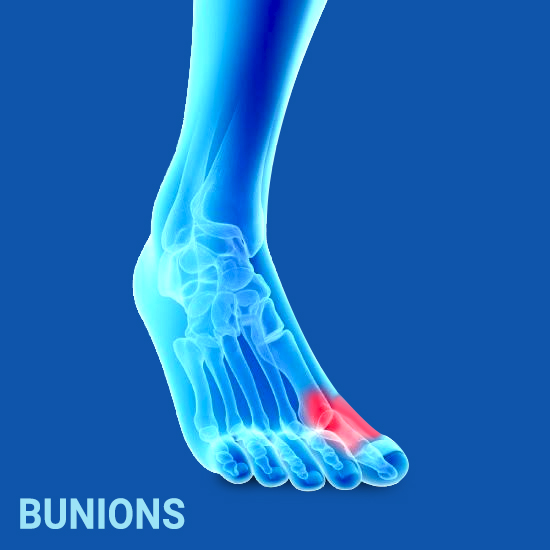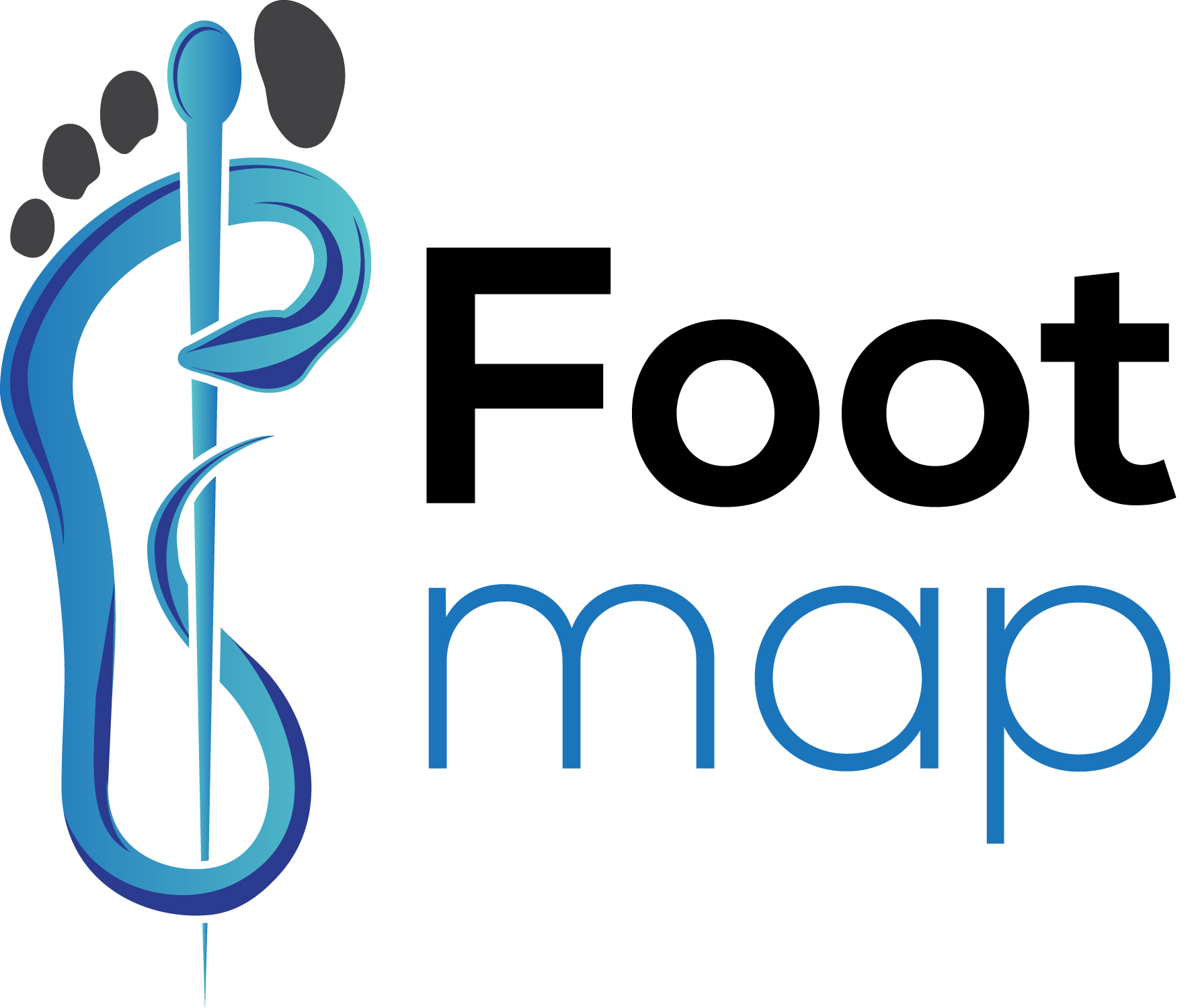Bunions
 A bunion is a painful bony bump, a deformity of the metatarsophalangeal joint at the base of the big toe. When your feet get repeatedly squeezed into narrow, pointed-toe footwear, a bunion is most likely to develop. It happens slowly over time, and eventually gets more prominent and sticks out. Over time, the typical structure of the bone changes, resulting in the bunion bump. The enlarged joint is often inflamed. If left untreated, a bunion can get worse over time. Bunions are more common in women.
A bunion is a painful bony bump, a deformity of the metatarsophalangeal joint at the base of the big toe. When your feet get repeatedly squeezed into narrow, pointed-toe footwear, a bunion is most likely to develop. It happens slowly over time, and eventually gets more prominent and sticks out. Over time, the typical structure of the bone changes, resulting in the bunion bump. The enlarged joint is often inflamed. If left untreated, a bunion can get worse over time. Bunions are more common in women.
Causes
-
- Frequently wearing shoes with narrow toes
- Hereditary – foot shape and structure
- Low arches, flat feet, and loose joints and tendons increase the risk of bunions
- Wearing high heels every day or more often
- Work which involves a lot of standing and walking
- Ballet dancers whose feet suffer repetitive stress
- Wearing Ill-fitted shoes
- Inflammatory conditions such as Rheumatoid arthritis
- Underlying Neuromuscular condition
Symptoms
Symptoms of bunions include
-
-
- Bulging bump on the base of the toe
- Pain
- Tenderness
-
Redness
- Inflammation/swelling
- Hardened skin on the bottom of the foot
- Restricted movement and stiffness of the joint
- Difficulty in walking due to affected toe stiffness
- A burning sensation
Diagnosis
The doctor will physically examine the foot, and based on the symptoms will diagnose the condition. May ask for X-ray to check the alignment of your toes and look for the extent of damage to the MTP joint.
Treatment
-
-
- Non-surgical procedures, Lifestyle changes are advised to help relieve from bunions such as
- Applying ice to the affected area to relieve pain and reduce swelling
- Anti-inflammatory drugs such as ibuprofen
- Therapy such as warm soaks, whirlpool, ultrasound and massage
- Wearing proper-fitted shoes with enough toe room
- Use of Orthotics helps relieve pressure on the toe.
- Padding – bunion shield to cushion the painful area
- Getting your foot analysed to find the right kind of shoe for your foot shape and activity
- Maintain a healthy weight
- Wearing a night splint to hold the toe in position and ease the pain and discomfort while you sleep
-
When non-surgical procedures for an extended period doesn’t ease the pain or if the bunions develop into other painful foot problems such as Bursitis, Metatarsalgia, Hammertoe, your doctor will recommend surgery. A surgeon puts bones, ligaments, tendons and nerves back into the correct order, and removes the bump. Recovery post-surgery may take six months or more.
Prevention
Choose a proper-fitting shoeaccording to your foot shape and the activity you are involved, especially the one with a lot of toe room.
